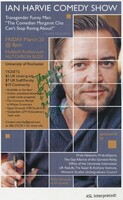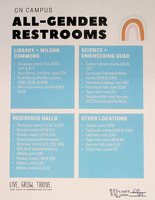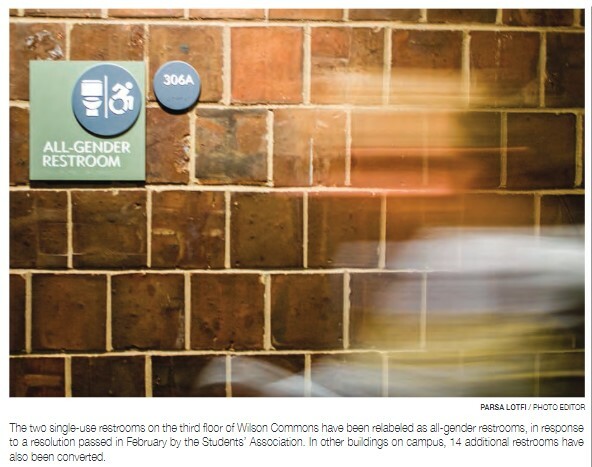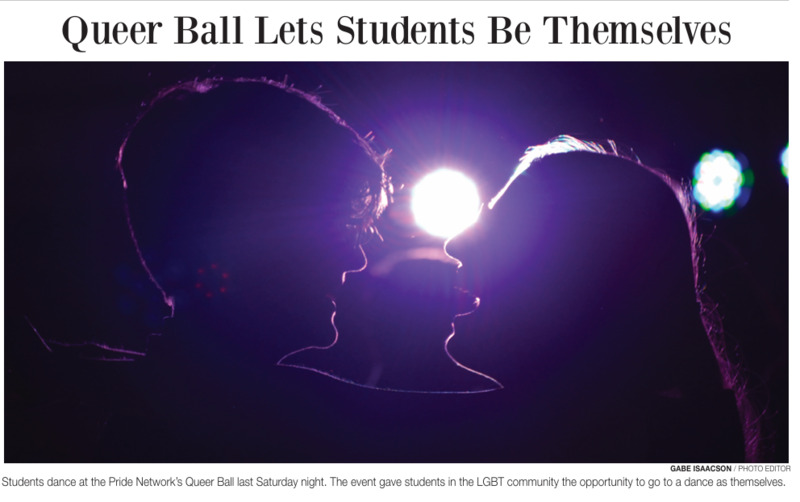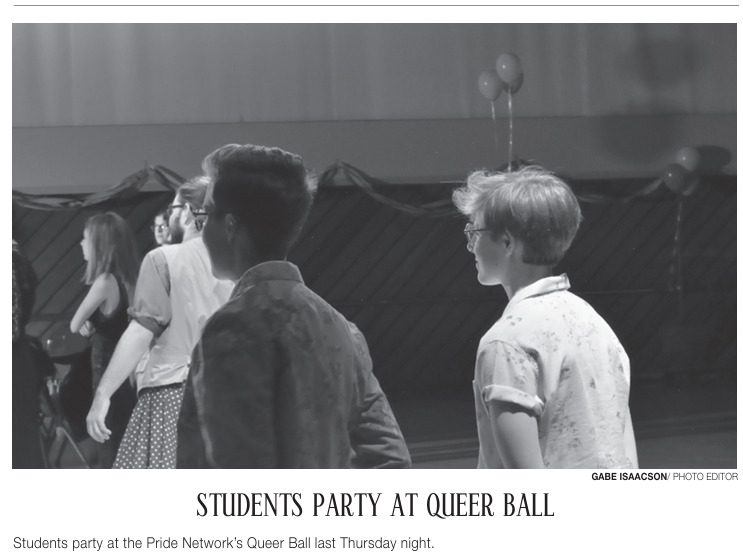2010s
Transgender Inclusion
The 2010s also began with a transgender speaker coming to the University of Rochester. Pride Network sponsored Ian Harvey, a trans man comedian, to perform his comedy act relating to gender and politics. Unlike the 2000s, which featured trans activism from afar and in theory, this decade would see a rise in visible transgender students and movements for tangible improvements in inclusion within policy. As the 40th anniversary of the Gay Liberation Front rolled around, it was clear that the most pressing LGBTQ+ issue was gender identity. This was not unique to the University of Rochester, it occurred on a broader societal scale. As the country saw increased celebrities coming out and political debates surrounding bathroom bills, the university faced these issues head-on. Students and faculty whose lives were directly affected by these measures stood at the forefront and fought to be seen, acknowledged, and integrated into the University community. Some of the efforts included:
- The Paul J. Burgett Intercultural Center and Grassroots Clothing Exchange collaborated for Queer and Trans Clothing Exchanges to provide gender-affirming clothing for students at no cost. [37]
- Efforts were made to find a balance between gendered groups on campus (Greek Life, Acapella, etc) and transgender inclusivity. [38]
- Accessible information was made readily available through the creation of “Trans at Rochester: A Handbook for Transgender People Navigating Social, Administrative, and Medical Gender Transition at the University of Rochester.” [39]
- All-gender bathroom maps were made to let students know where these bathrooms were, especially before steps were taken to increase the number of these bathrooms.
All-Gender Restrooms
With more transgender students coming out on campus, the lack of all-gender restrooms became more apparent. Trans students and members of the Pride Network pushed for SA Government resolutions and proposals to increase the amount of all-gender bathrooms on campus. As of 2013 Pride Network had worked to convert the restrooms outside of Starbucks in Wilson Commons to all-gender use. This was a start towards awareness, with increasing efforts to improve more spaces. This was especially an issue in first-year housing which had exclusively gendered bathrooms. Upperclassmen housing tended to have individual bathrooms and options for gender-variant students, but this wasn’t a solution for transgender freshmen.
2016 saw an important step forward with the opening of Lam Square’s all-gender restroom. This was an intentionally built and planned multi-stall bathroom for all genders. Amongst the country’s bathroom bills and scrutiny, the university chose to take a step toward progress. Placed in a central location and allowing for more than one to use at a time, it represented an important movement towards intentional inclusivity of trans students and faculty.
TINT (Trans, Intersex, Nonbinary, Two-Spirit)
Some students didn’t find Pride Network to be the most inclusive place for Transgender students. The still-active support group TINT (Trans, Intersex, Nonbinary, and Two-Spirit) was formed to create a space specifically for gender-variant students. One effort of TINT was to transition the annual drag show fundraiser that Pride Network put on, which was somewhat ineffective, into a ball for students. In 2017, Pride Network threw its first annual Queer Ball. This event allowed LGBTQ+ students to comfortably be themselves in a space that is usually one of scrutiny, a school dance. This tradition is still active today and feels reminiscent of those early GLF dances, creating a space for the community to celebrate itself.
Complex Histories
Using the University archives to compile these accounts often portrays a watered-down perspective, only reflective of one side of a complex history. In talking with two transgender alumni, I got to see a more nuanced picture of transgender life on campus. While it is easy to get caught up in black and white, supportive or unsupportive, in reality the campus improvements were shades of gray.
Progress was slow-moving, support seemed oftentimes performative, and most efforts had to be spearheaded by trans students themselves. Even this in itself was difficult because it placed even more attention on students already facing difficulties in their campus lives. This applies to the entire history depicted in this project, but there are always other narratives to be found. It is important to remember that, though major victories were being won over the decade of the 1970s, things were not clear, simple, or straightforward.
Burgett Intercultural Center
In 2017, the Paul J. Burgett Intercultural Center (BIC) hired Col Raimond as the LGBTQ+ Coordinator.[40] However, there was work being done by faculty and staff long before this date. Before this position was filled there had already been big strides in LGBTQ+ life on campus. Most single-stall bathrooms had been designated as gender-neutral, upperclassman housing was no longer gendered, and there were case-by-case gender-neutral housing options for first-year students. Transition guidelines for faculty were in place, the BICC held LGBTQ+ programs, and Rainbow Graduation (an LGBTQ+ graduation ceremony) was an annual celebration. The creation of the coordinator position designated an individual to balance and work towards even more efforts to better the lives of LGBTQ+ students and faculty on campus.

